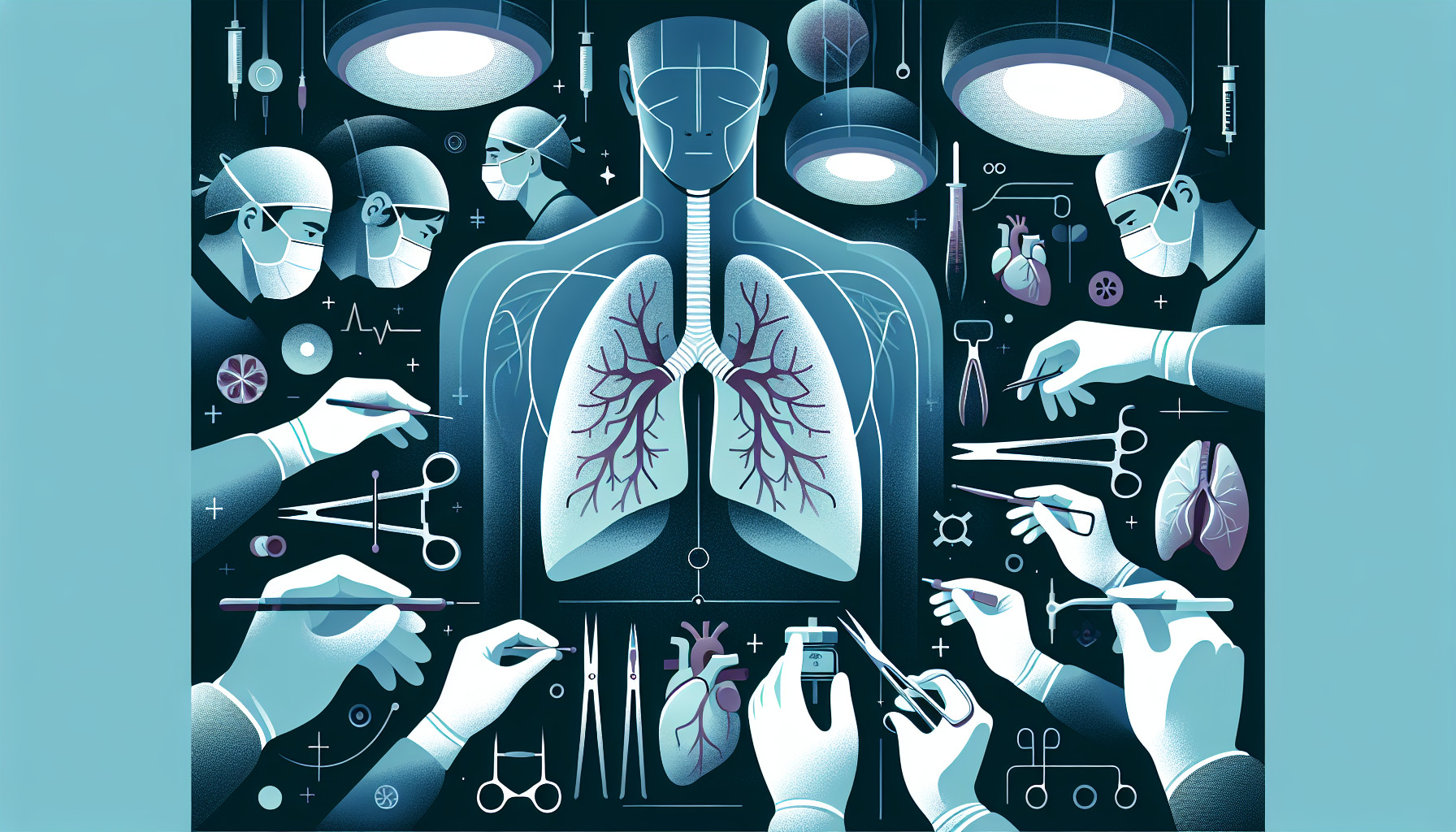Our Summary
This research paper discusses the impact of the Lung Allocation Score (LAS) system on lung transplant waiting lists and outcomes for both children and adults. The LAS system, which had been criticized for not being suitable for children, was studied using data from the United Network for Organ Sharing. The study looked at all lung transplant listings from 1995 to June 2014, comparing outcomes before and after the introduction of the LAS system.
Results showed that the waiting time for a lung transplant decreased for all age groups after the LAS system was introduced. There was also an increase in the number of people receiving a transplant, and fewer people died while waiting for a transplant. This was true even though the patients were more critically ill.
In terms of survival rates after the transplant, both adults and children lived longer after the introduction of the LAS system, but this was not the case for adolescents.
The study concludes that the LAS system has improved waiting times, decreased deaths on the transplant list, and improved survival rates after transplant for children. The authors suggest that further development of this system and wider sharing of pediatric donor lungs could increase these benefits.
FAQs
- What is the Lung Allocation Score (LAS) system and how does it impact lung transplant waiting lists?
- How has the LAS system affected the survival rate of adults and children after lung transplants?
- What were the significant improvements observed in the study after the introduction of the LAS system?
Doctor’s Tip
A doctor might tell a patient about lung transplant that the Lung Allocation Score (LAS) system has improved waiting times, decreased deaths on the transplant list, and improved survival rates after transplant for both children and adults. It is important to discuss the potential benefits and risks of a lung transplant with your healthcare team and to follow their recommendations closely throughout the process. Additionally, staying healthy through proper nutrition, exercise, and avoiding smoking can help improve outcomes after a lung transplant.
Suitable For
Patients who are typically recommended for a lung transplant are those with end-stage lung disease that cannot be effectively treated with other methods. This includes patients with conditions such as cystic fibrosis, chronic obstructive pulmonary disease (COPD), idiopathic pulmonary fibrosis, pulmonary hypertension, and other severe lung diseases. These patients often have severe symptoms such as shortness of breath, fatigue, and cough, and their quality of life is significantly impacted. Lung transplant may be recommended when other treatments have been unsuccessful in improving their condition.
Timeline
Before lung transplant:
- Patient is diagnosed with end-stage lung disease and is referred to a transplant center.
- Patient undergoes extensive evaluation to determine if they are a suitable candidate for a transplant.
- Patient is placed on the transplant waiting list and begins waiting for a suitable donor organ.
- Patient’s health deteriorates as they wait for a transplant, with symptoms worsening and quality of life decreasing.
After lung transplant:
- Patient receives a call that a suitable donor organ is available and undergoes the transplant surgery.
- Patient spends time recovering in the hospital, closely monitored for any complications.
- Patient undergoes rehabilitation and physical therapy to regain strength and lung function.
- Patient must take immunosuppressant medications for the rest of their life to prevent rejection of the transplanted lung.
- Patient undergoes regular follow-up appointments and monitoring to ensure the success of the transplant and to detect any potential complications.
- Patient experiences improved lung function, increased energy levels, and a better quality of life post-transplant.
What to Ask Your Doctor
- How does the Lung Allocation Score (LAS) system work and how is it used to determine eligibility for a lung transplant?
- How has the introduction of the LAS system affected the waiting times for a lung transplant?
- What are the changes in the number of people receiving a lung transplant before and after the introduction of the LAS system?
- What are the survival rates after a lung transplant for both adults and children following the implementation of the LAS system?
- How has the LAS system improved outcomes for children in need of a lung transplant?
- Are there any potential drawbacks or limitations of the LAS system that I should be aware of?
- How can I increase my chances of receiving a lung transplant under the LAS system?
- Are there any alternative options or treatments I should consider before pursuing a lung transplant?
- What is the process like for finding a suitable donor and undergoing a lung transplant surgery?
- What are the potential risks and complications associated with a lung transplant, and how will my recovery be managed post-surgery?
Reference
Authors: Lancaster TS, Miller JR, Epstein DJ, DuPont NC, Sweet SC, Eghtesady P. Journal: J Heart Lung Transplant. 2017 May;36(5):520-528. doi: 10.1016/j.healun.2016.10.007. Epub 2016 Oct 17. PMID: 27866928
